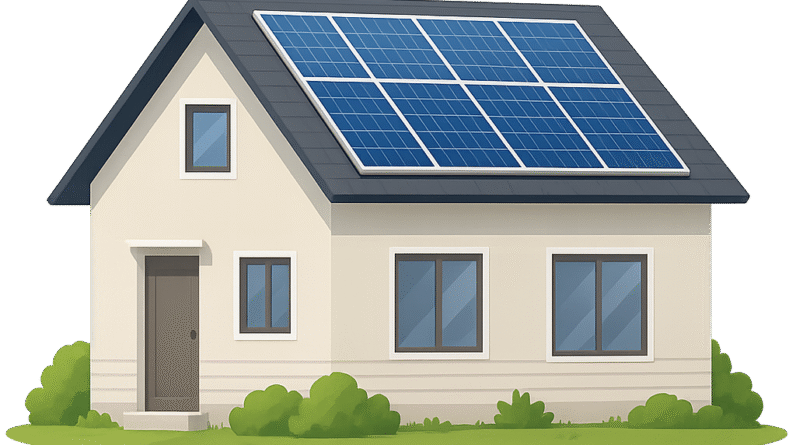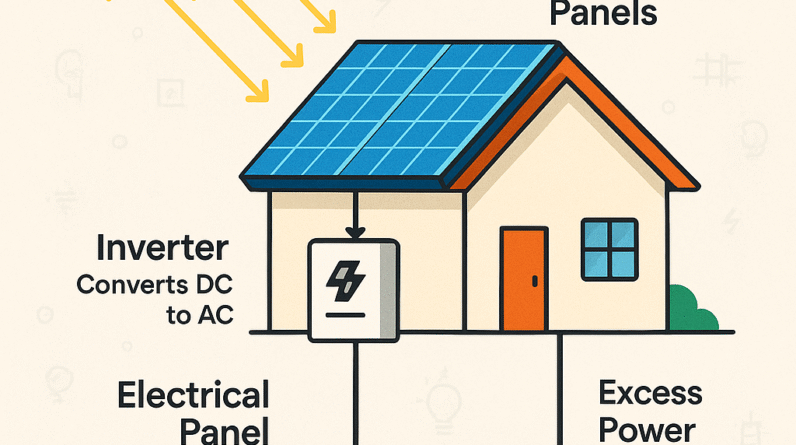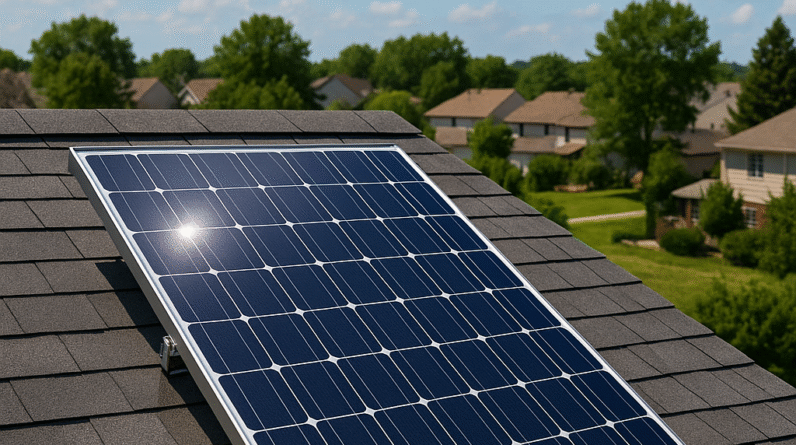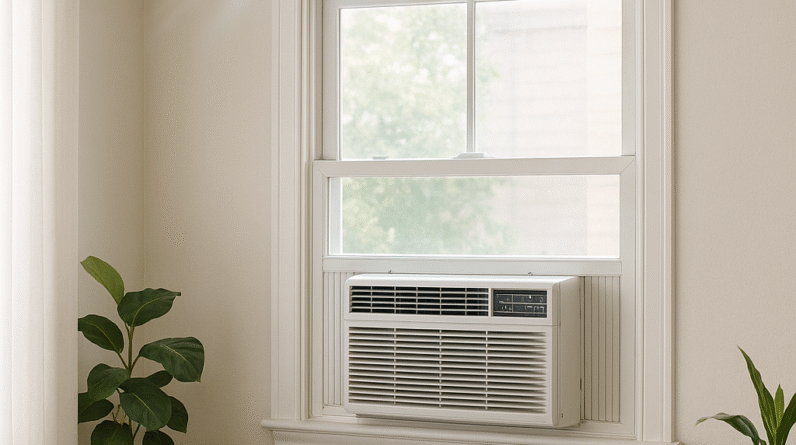
Do Solar Panels Actually Save You Money?
Do Solar Panels Actually Save You Money? You may have heard all the buzz about solar panels and how they can save you money, but do they really live up to the hype? Many people are curious to know if investing in solar panels is worth it in terms of long-term savings. Well, the answer is a resounding yes! Installing solar panels can indeed lead to significant savings on your energy bills. Not only do they reduce your reliance on traditional energy sources, but they can also generate extra electricity that can be sold back to the grid, further increasing your savings. So, if you’re wondering whether solar panels are a worthwhile investment, keep reading to discover the financial benefits they can offer.
Understanding the Initial Cost and Payback Period of Solar Panels
Investing in solar panels for your home or business is not just an environmentally friendly choice, but it can also have significant financial benefits. However, before making the decision to go solar, it’s essential to understand the initial cost and payback period associated with solar panel installations.
Cost of Solar Panels
The cost of solar panels varies depending on several factors, such as the size of the system and the quality of the panels. On average, a residential solar power system can range anywhere from $15,000 to $30,000. However, it’s important to note that the cost has been steadily decreasing over the years, making solar panels more affordable than ever before.
Factors Affecting the Cost
Several factors can impact the overall cost of solar panels. The first factor is the size of the system you require. Larger systems will naturally cost more than smaller ones. Additionally, the type and quality of solar panels you choose will also affect the cost. High-end panels may be pricier upfront, but they often offer better performance and greater longevity.
Financial Incentives and Rebates
One of the most appealing aspects of investing in solar panels is the availability of financial incentives and rebates. Government programs, such as the Federal Investment Tax Credit (ITC), allow you to claim a percentage of the installation cost as a tax credit. State-level incentives and rebates may also be available. These incentives can significantly reduce the initial cost of installing solar panels, making them a more affordable option.
Calculating the Payback Period
The payback period refers to the length of time it takes for the financial benefits of solar panels to outweigh the initial cost. Several factors influence the payback period, including the cost of installation, your energy consumption, and potential savings on your energy bills. On average, most homeowners can expect to recoup their initial investment within 6 to 10 years of installing solar panels. After the payback period, the electricity generated by your solar panels becomes essentially free, leading to substantial long-term savings.
Reducing Energy Bills with Solar Panels
One of the most significant benefits of solar panels is their ability to reduce your energy bills. By generating your electricity using solar power, you can greatly reduce or even eliminate your dependence on the grid.
Generating Electricity for Self-Consumption

Solar panels harness the energy from the sun to generate electricity. By installing a solar power system on your property, you can generate a significant portion of the electricity required to power your home or business. This self-generated electricity means you rely less on energy provided by the utility company, resulting in lower energy bills.
Net Metering and Feed-in Tariffs
Net metering allows you to feed surplus electricity generated by your solar panels back into the grid. When your panels generate more electricity than you consume, the excess is credited to your account, essentially spinning your meter backward. This credit is then used to offset any electricity you consume from the grid during periods of low solar generation, significantly reducing your energy bills. Additionally, some regions offer feed-in tariffs, where you receive a payment for excess electricity you feed back into the grid.
Potential Energy Bill Savings
The potential energy bill savings associated with solar panels can be substantial. Depending on several factors, including your energy consumption, the size of your solar panel system, and the amount of sun your property receives, you could save hundreds or even thousands of dollars each year. These savings can accumulate over the years, leading to substantial long-term financial benefits.
Long-Term Savings
While the initial cost of installing solar panels may seem significant, it’s important to consider the long-term savings they offer. As utility rates continue to rise, the electricity generated by your solar panels becomes increasingly valuable. Furthermore, once your payback period is over, you essentially have access to free electricity, leading to significant savings in the long run. Solar panels are a long-term investment that not only pays for itself but continues to generate financial benefits for years to come.
Exploring Financing Options for Solar Panels
When it comes to financing solar panels, various options are available to suit different financial situations. Whether you prefer to purchase the panels upfront, lease them, or explore power purchase agreements, there is a solution to fit your needs.
Purchasing Solar Panels Upfront
Purchasing solar panels outright is an attractive option for those who have the financial means to do so. By paying the full cost upfront, you can immediately begin enjoying the financial benefits of reduced energy bills. Additionally, purchasing the panels allows you to take advantage of available financial incentives and rebates.
Leasing Solar Panels
For those who may not be able to afford the upfront cost of solar panels, leasing offers an alternative. With a solar panel lease, you essentially rent the panels from a solar installation company. While you may not own the system, you can still benefit from lower energy bills and reduced carbon footprint. However, it’s important to note that you may not be eligible for certain financial incentives and rebates if you choose to lease.
Power Purchase Agreements
Power purchase agreements (PPAs) are another financing option for solar panels. With a PPA, a solar installation company installs and maintains the panels on your property, and you purchase the electricity generated at a predetermined rate. PPAs often require little to no upfront cost and can provide immediate savings on your energy bills. However, it’s crucial to carefully review the terms and conditions of the agreement, as they can vary.
Loan Programs
Many financial institutions offer loan programs specifically designed for solar panel installations. These loans allow you to spread out the cost of the panels over a more extended period, making solar power more accessible for those on a budget. By financing your solar panels through a loan program, you can enjoy the benefits of reduced energy bills while making affordable monthly payments towards the cost of the system.
The Effect of Location on Solar Panel Performance and Savings
The performance and savings associated with solar panels can vary depending on your location. Several factors impact how efficiently your panels generate electricity and the overall financial benefits you can expect to enjoy.
Amount of Sunlight in the Area
One of the most critical factors influencing solar panel performance is the amount of sunlight the area receives. Regions with higher solar insolation, which refers to the amount of solar radiation received per unit area, will generally experience greater solar panel efficiency. Areas with abundant sunshine, such as the Southwest region of the United States, have ideal conditions for maximizing the performance of solar panels.
Shading and Obstructions
Shading and obstructions can significantly impact the performance of solar panels. Even partial shading caused by nearby trees, buildings, or other structures can reduce the overall output of your panels. It’s essential to consider potential shading issues when designing your solar panel system and to choose an installation location that maximizes exposure to sunlight throughout the day.
Orientation and Tilt
The orientation and tilt of your solar panels play a crucial role in maximizing their performance. For optimal performance, panels should be oriented towards the sun’s path and tilted at an angle that allows for maximum sunlight absorption. Depending on your location, the ideal orientation and tilt may vary. Consulting with a solar panel professional can help ensure that your panels are positioned correctly for optimal performance.
Climate Considerations
Climate conditions, such as temperature and humidity, can also impact solar panel performance. While solar panels can still generate electricity in cloudy or colder climates, they may not produce as much power as they would in ideal conditions. However, it’s essential to note that improvements in solar technology have made panels more efficient in a wider range of climates, allowing them to generate power even in less-than-ideal conditions.
Maintenance and Replacement Costs of Solar Panels
Like any other investment, solar panels require regular maintenance to ensure they continue to perform optimally. Additionally, understanding the warranty and lifespan of your panels, as well as the potential costs associated with replacement parts and insurance, is crucial for long-term financial planning.
Regular Maintenance Requirements
Solar panels generally require minimal maintenance, but regular inspections and cleaning are recommended to maximize their efficiency. Inspecting panels for any damage, cleaning them periodically to remove dirt and debris, and ensuring all connections are secure can help extend the lifespan of your system and maintain its performance. Many solar installation companies offer maintenance packages that can take care of these tasks for you.
Warranty and Lifespan of Solar Panels
Solar panels typically come with a warranty that covers their performance for a specific duration. Most warranties range from 20 to 25 years, guaranteeing that the panels will maintain a certain level of power output over that period. It’s important to review the warranty terms and conditions to understand what is covered and for how long. Additionally, reputable manufacturers often offer longer warranties, providing peace of mind that your investment is protected.
Replacement Costs of Parts
While solar panels are built to withstand various weather conditions, accidents or natural wear and tear may necessitate the replacement of certain components. The costs of replacing parts such as inverters, optimizers, or even the panels themselves can vary depending on the specific equipment and the warranty coverage. When budgeting for your solar panel system, it’s important to consider any potential replacement costs in the future.
Insurance Considerations
Insurance coverage for your solar panel system is an essential consideration. While solar panels themselves are often built to withstand various weather conditions and have a low risk of damage, unexpected events such as severe storms or accidents can occur. Adding your solar panels to your homeowners’ insurance is typically recommended to protect your investment in case of damage or theft.
Environmental Benefits Associated with Solar Panels
In addition to the financial advantages, solar panels offer various environmental benefits that contribute to a more sustainable future.
Reducing Carbon Footprint
Solar panels generate electricity from a renewable source – the sun. By utilizing this clean energy, you reduce your reliance on fossil fuels, which are major contributors to greenhouse gas emissions. By going solar, you directly contribute to reducing your carbon footprint and combatting climate change.
Contributing to Renewable Energy
Integrating solar panels into the energy mix helps diversify our energy sources and reduces dependence on finite resources such as coal, oil, and natural gas. By increasing the share of renewable energy in the grid, we can take significant steps towards a more sustainable and resilient energy future.
Promoting Energy Independence
When you generate your electricity with solar panels, you become less dependent on the grid and are more self-reliant when it comes to energy. This sense of energy independence is empowering, as it allows you to take control of your energy consumption and reduce vulnerability to power outages or fluctuations in energy prices.
Mitigating Air and Water Pollution
Traditional electricity generation methods, such as burning fossil fuels, release harmful pollutants into the air and water. By relying on solar panels for electricity generation, you help reduce air pollution, minimize the release of greenhouse gases, and preserve water quality. Solar energy is a clean, renewable resource that plays a significant role in mitigating the environmental hazards associated with traditional power generation.
Potential Risks and Challenges of Installing Solar Panels
While the benefits of solar panels are numerous, it’s important to be aware of potential risks and challenges that may arise during the installation and operation of your system.
Finding a Reliable Solar Installation Company
Choosing a reputable and experienced solar installation company is crucial to a successful solar panel installation. With the increasing demand for solar panels, it’s important to do your research and select a company with a proven track record in the industry. Reading reviews, checking certifications, and getting recommendations from trusted sources can help ensure you find a reliable installer.
Potential System Performance Issues
While solar panels are designed to withstand various weather conditions, unexpected issues can sometimes arise. These issues can include system malfunctions, decreased energy production, or problems with the electrical components. Regular monitoring and prompt maintenance by professionals can help identify and address any performance issues before they significantly impact the system’s overall efficiency.
Local regulations surrounding solar panel installations can change over time. These changes can include adjustments to net metering policies, updates to building codes, or modifications to incentive programs. Staying informed about any updates in regulations and understanding their potential impact on your solar panel system can help you adapt and make informed decisions.
Possible Damage to Roof
Solar panels are typically installed on rooftops, which means there is a possibility of damage during the installation process. While professional installers take precautions to minimize any potential harm, it’s essential to evaluate the condition of your roof before installing solar panels. Addressing any existing issues can help prevent damage to your roof and ensure a secure and successful installation.
Factors to Consider Before Going Solar
Before making the decision to install solar panels, several factors should be taken into consideration to determine if it is the right choice for you.
Property Ownership and Long-Term Plans
If you rent your property or anticipate moving within a few years, installing solar panels may not be the most cost-effective option. Solar panel installations are a long-term investment, and it’s important to consider your property ownership and long-term plans to ensure you can fully benefit from solar energy.
Energy Consumption and Usage Patterns
Understanding your energy consumption and usage patterns is crucial for determining the appropriate size and type of solar panel system you need. Analyzing your electricity bills, identifying peak usage times, and estimating future energy needs can help tailor your solar panel installation to your specific requirements.
Availability of Incentives and Rebates
The availability of financial incentives and rebates can significantly impact the financial viability of solar panels. Before going solar, it’s important to research and understand the incentives and rebates available in your region. These incentives can greatly affect the upfront cost and payback period of your solar panel investment.
Financial Readiness
While the long-term savings associated with solar panels are substantial, it’s important to assess your financial readiness before making the investment. Consider your budget, savings, and the potential impact on your cash flow. Familiarize yourself with the available financing options and choose the one that aligns with your financial goals.

Case Studies: Real-Life Examples of Solar Panel Savings
To illustrate the financial benefits of solar panels, let’s explore a few real-life case studies of both residential and commercial installations.
John and Sarah, a couple living in a sunny region, decided to invest in a solar panel system. They installed a 6-kilowatt (kW) system on their roof, which cost them $20,000 (after accounting for the Federal Investment Tax Credit). Their average monthly electricity bill before going solar was $150. With their solar panels, they were able to eliminate most of their electricity bill, bringing it down to an average of $20 per month. Considering the annual savings of $1,560, their payback period was approximately 12.8 years.
Residential Case Study 2
Emily, a single homeowner, installed a 10-kW solar panel system on her property. The total cost, before any incentives or rebates, was $28,000. However, with the Federal Investment Tax Credit and state-level incentives, she was able to reduce the upfront cost by 30%. Prior to going solar, Emily’s monthly electricity bill averaged $200. After installing the solar panels, her energy bill decreased to an average of $30 per month. With annual savings of $2,400, her payback period was approximately 8.3 years.
Commercial Case Study 1
A small business owner, James, decided to install a solar panel system on the rooftop of his office building. With a total installation cost of $50,000, he took advantage of the Federal Investment Tax Credit and state-level incentives, reducing the cost by 40%. James’ monthly electricity bill before going solar was $1,200. After installing the solar panels, his energy bill dropped to $200 per month. With annual savings of $12,000, his payback period was approximately 4.6 years.
A medium-sized manufacturing company, XYZ Industries, invested in a large-scale solar panel system for their facility. The total cost of the installation was $500,000. By leveraging the Federal Investment Tax Credit, state-level incentives, and a Power Purchase Agreement, XYZ Industries was able to significantly reduce the upfront cost. Prior to installing solar panels, their monthly electricity bill averaged $10,000. After going solar, their energy bill decreased to $1,000 per month. With annual savings of $108,000, their payback period was approximately 4.6 years.
Conclusion
Solar panels offer both financial and environmental benefits that make them an attractive investment for homeowners and businesses alike. By understanding the initial cost, payback period, and potential energy bill savings, you can make an informed decision about whether solar panels are right for you. Additionally, exploring financing options, considering location-specific factors, and being aware of maintenance and replacement costs will ensure you can reap the long-term benefits of solar energy. By going solar, you contribute to a more sustainable future while enjoying reduced energy bills, long-term savings, and the satisfaction of knowing you’re making a positive impact on the planet.






